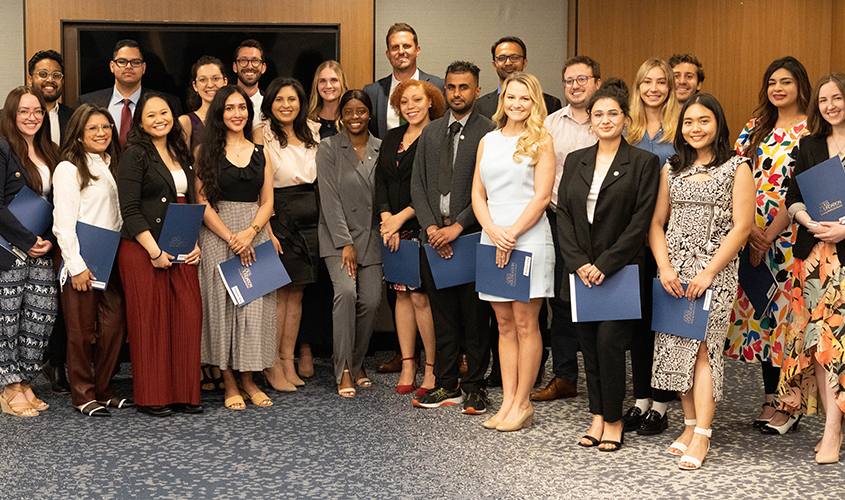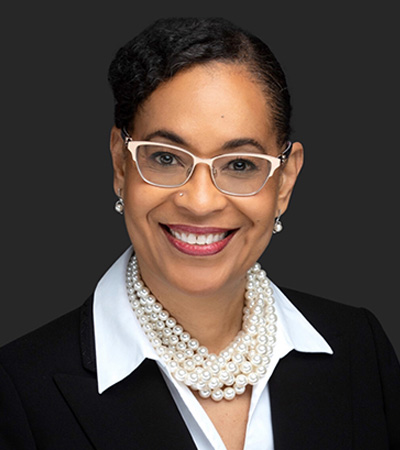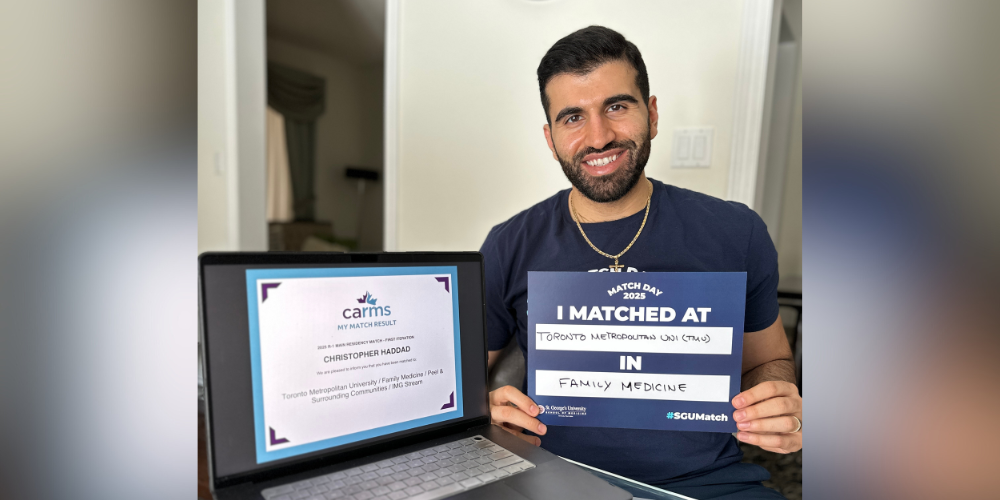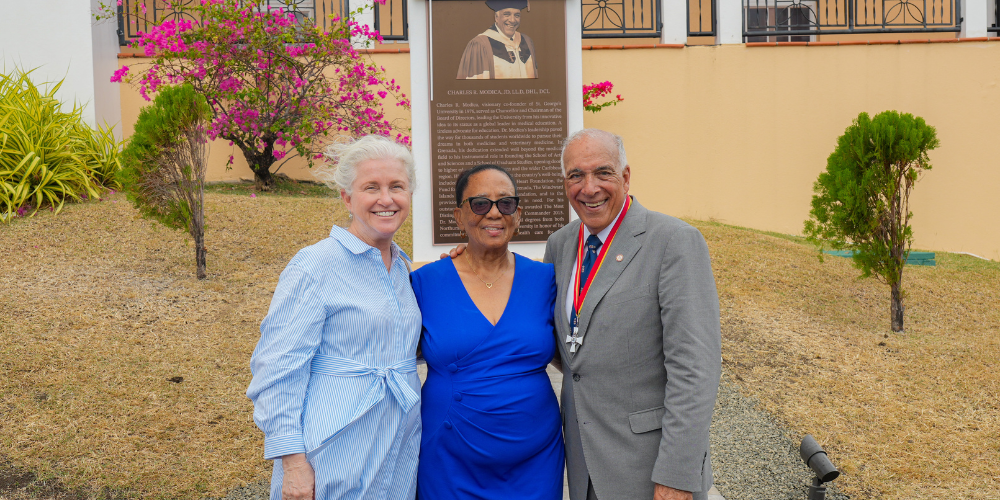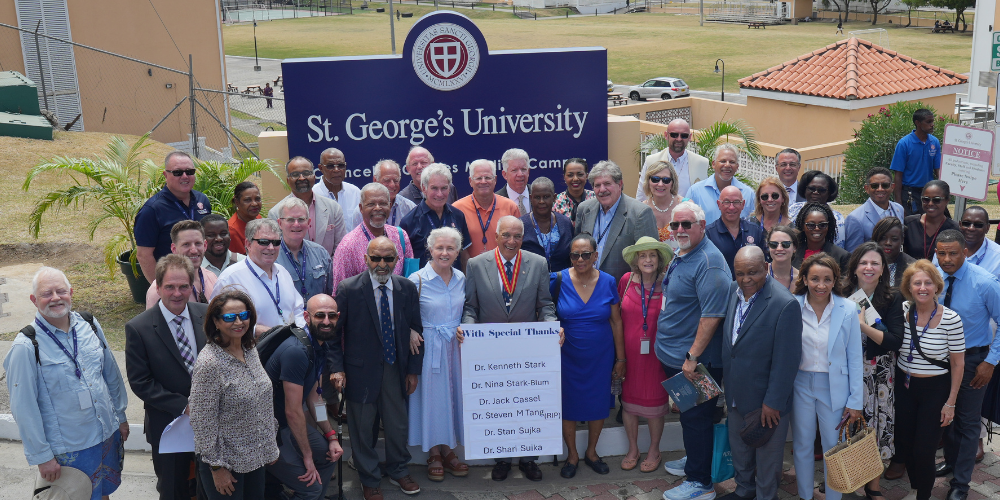Match Day 2025: 1,000+ SGU Students and Grads Secure Residency Positions

A wave of excitement and relief swept through the St. George’s University community on Friday as hundreds of future doctors discovered where they will continue their medical training during Match Day 2025.
More than 1,015 SGU School of Medicine students and graduates secured first-year US residency positions.* These numbers are expected to climb in the coming weeks.
“The entire St. George’s University community congratulates this remarkable class of medical students on their success,” said Dr. Marios Loukas, dean of the St. George’s University School of Medicine. “This milestone represents the culmination of years of hard work, dedication, and resilience.”
Students matched in 20 specialties, including highly competitive positions and crucial primary care fields. They include:
- Anesthesiology,
- Child neurology,
- Diagnostic radiology,
- Emergency medicine,
- Family medicine,
- Internal medicine,
- Neurodevelopmental disabilities,
- Neurology,
- Obstetrics and gynecology,
- Orthopedic surgery,
- Pathology,
- Pediatrics,
- Physical medicine and rehabilitation,
- Plastic surgery,
- Psychiatry,
- Surgery,
- Vascular surgery, and more.
They will join residency programs, many at prestigious institutions, in 41 US states and the District of Columbia this summer.
Match Day is a milestone moment in students’ medical education as they learn where their hard work and determination will take them in their careers. Students and graduates will now enjoy the fruits of their labor as the next chapter of their medical training begins—this time with “MD” beside their name.
SGU News spoke with several students who recently matched to hear about the emotions behind the moment they found out their hard work had paid off, and what they’re most eager to experience during residency. Here’s a glimpse into their journey.

Roberta Vadan, MD ’25 (expected)
Matched: Internal medicine
Hospital: Florida State University
Hospital location: Cape Coral, FL
How did you feel when you Matched? When I found out I matched, it felt like such a surreal moment. I couldn’t believe that as an international student with so many barriers, I was able to successfully land a wonderful position at FSU. I’m so thrilled and so grateful for all the mentors, my close friends, and family members that were able to support me during my time.
Ahmad Elfaham, MD ’25 (expected)
Matched: Internal medicine/interventional radiology
Hospital: Maimonides (preliminary year)/Northwell Mather
Hospital location: Port Jefferson, NY
How did you feel when you matched? It was mixed emotions. I truly didn’t expect it. The program was ranked my number two, and the hospital only has one spot since it’s interventional radiology integrated. I was in disbelief. Either way, I’m very, very excited about this opportunity.
What are you most looking forward to during residency? Working with great mentors, staff, and meeting amazing new residents from all over the country. Also I can’t wait to finally get my first check!
Dailyn Figueredo, MD ’25
Matched: General surgery
Hospital: Mount Sinai Medical Center
Hospital location: Miami Beach, FL
How did you feel when you matched? I felt relieved that I would be staying home to start my journey as a future surgeon and that all the hard work from the last four years paid off.
What are you most looking forward to during residency? I’m looking forward to connecting with new like-minded individuals who are working towards becoming surgeons and bettering our patients’ lives. I’m also excited to apply and further practice the knowledge I have acquired these last four years.

Chanel Johnson, MD ’25 (expected)
Matched: Emergency medicine
Hospital: Lincoln Medical and Mental Health Center
Hospital location: Bronx, NY
How did you feel when you matched? So excited! I am very grateful to have matched into my first choice!
What are you most looking forward to during residency? The training! Lincoln is the third busiest emergency department in the United States so it will be a hard four years, but I know the training will be top tier.
Mary Wolfe Pestana, MD ’25 (expected)
Matched: General surgery
Hospital: University of Florida College of Medicine Jacksonville
Hospital location: Jacksonville, FL
How did you feel when you matched? When I opened that email and found out that I had matched categorical general surgery, it felt like all the work I had put in was finally worth it. All the people who discouraged me from my dream were wrong. I am so excited to encourage others that it is possible.
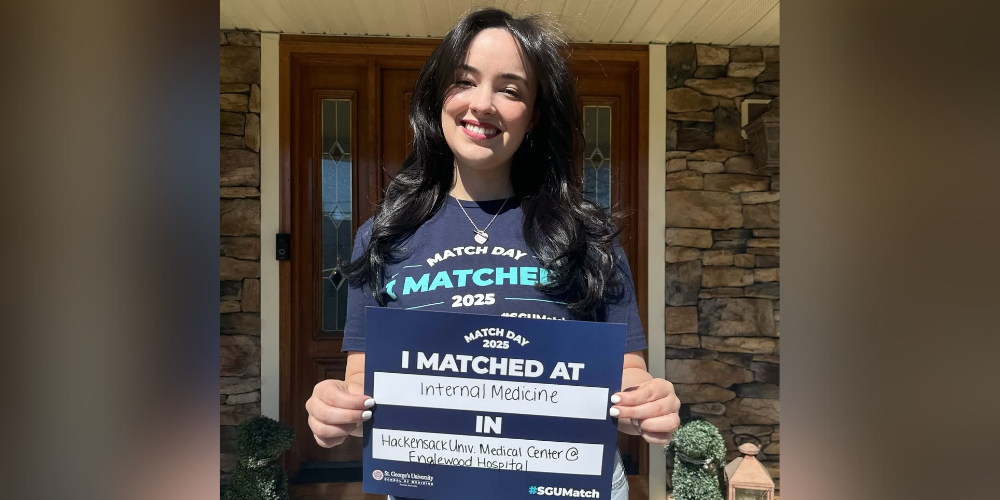
Geraldine Ortega, MD ’25 (expected)
Matched: Internal medicine
Hospital: Englewood Hospital and Medical Center
Hospital location: Englewood, NJ
How did you feel when you matched? When I found out I had matched, I felt an overwhelming wave of emotions—relief, excitement, and pure joy. This was the moment I had been working toward for years, and seeing my hard work pay off was incredibly rewarding. It was a mix of gratitude and disbelief, knowing that I was finally taking the next step toward my dream of becoming a physician.
What are you most looking forward to during residency? The most exciting part of starting residency is finally being able to do what I have dreamed of since childhood—taking care of patients. This is the beginning of the career I’ve always envisioned, and I can’t wait to apply my skills. Every challenge and learning opportunity in residency will bring me closer to my dream of pursuing a fellowship, and I couldn’t be more ready for this next chapter.
*Data as of March 2025
– Juliette Kimmins and Laurie Chartorynsky



